Prospective Students
Prospective Students
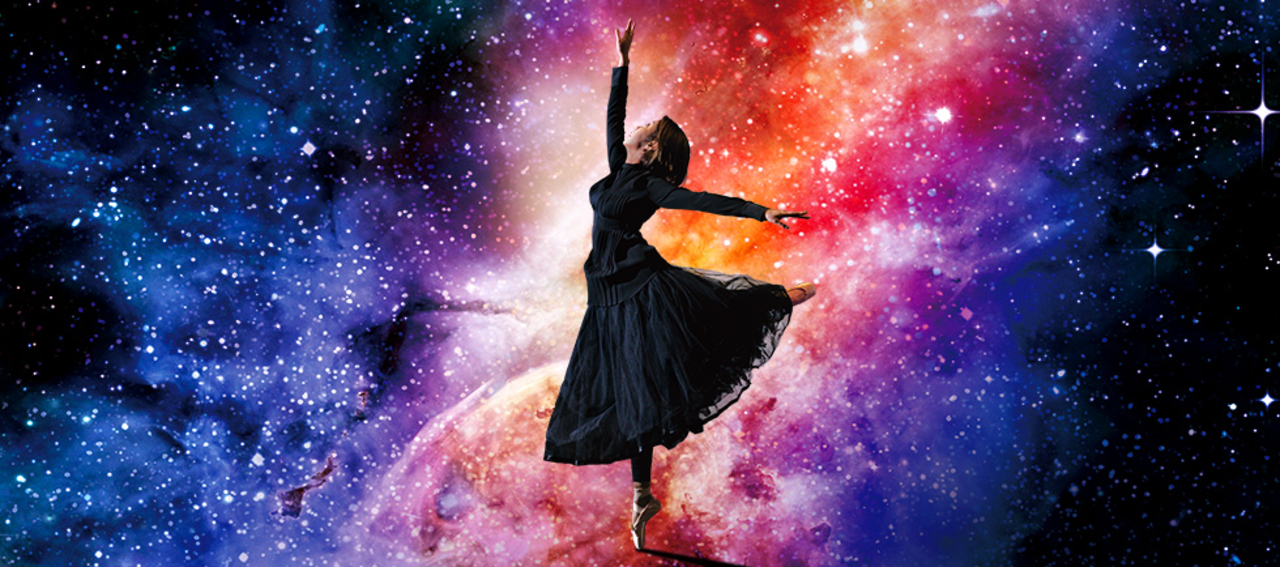
Planetary science professor Shigeru Ida has devoted his career to exploring the origin of the Earth and life in the universe, and Yuko Okubo has spent her life exploring our world through dance. We asked these two friends to talk about their connection with the world from the different perspectives of their chosen professions.
(Held on December 15, 2017 at Ookayama Campus)
Okubo:I was fortunate enough to meet Professor Ida about a year ago. Thank you so much for having me here today.
Ida:Since I was introduced to Okubo-san and others by a science communicator at the National Museum of Emerging Science and Innovation MIRAIKAN, we have had dinner with the same group of individuals every year. It has been a wonderful opportunity to share what we have been doing in our various fields.
Okubo:I visited your laboratory once with dancers and a musician, and I remember very well seeing a BUTOH poster on a wall. It struck me as a sign of your unique sensibility. Were you always interested in dance?
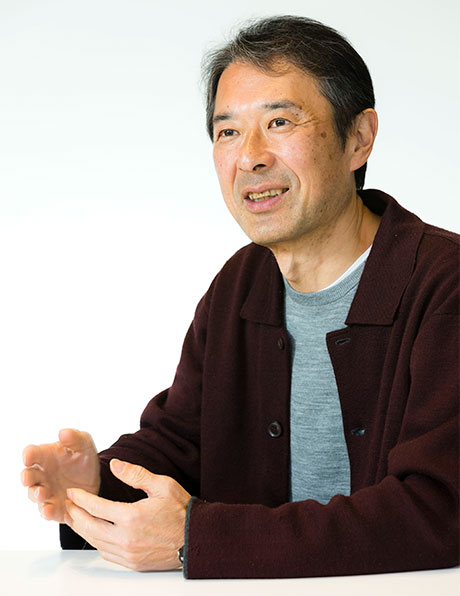
Shigeru Ida
Professor, Earth-Life Science Institute
Ida:Yes, since I was a college student in Kyoto. I believe you came to my laboratory because you wanted to talk with me for a book you were writing on dance and physics. While physics is not my main area of current expertise, we talked about a range of topics, and I tried to give you my view as a scientist. What got you thinking about science?
Okubo:Physical lines are very important in dance. They are the border between the outside world and the dancer. I studied ballet in my childhood and shifted to contemporary dance as I grew. During this time, I began searching for movements that would make it possible to go beyond these lines. I looked first through dance, and then sought answers in other areas. At a certain point I felt that the answer may lie in the overlapping area between art and science. Not long after we met, it hit me that I should see you to explore this. When I look back at that time, I wonder if you thought I was a little bit odd!
Ida:People often say that art and science have much in common. Once I began looking into it seriously, though, I found that they were actually quite different and that scientists see the world from a different perspective than artists do; but I found it quite exhilarating to explore different ways of approaching questions.
Okubo:It was the same for me. It was my first glimpse into how scientists approach questions and the differences in thinking between these approaches.
Ida:When I talked with you, I got a sense of the importance of physicality in art. Those of us in space science rarely consider physicality because the methodologies of basic science tend to eliminate such factors. In reality, however, scientists are human, and I think it is impractical to ignore physicality completely when discussing space. My book The Solar System and Planets Beyond talks about science in the sky and science toward human. Science in the sky explores the origin of the universe, black holes, gravitational waves, and ten-dimensional string theory, while science toward human explores medicine, the environment, and so forth. Because my background is in physics and geoscience, I felt a sense of incongruity. My discussions with you, however, highlighted the varied perspectives in different fields. Becoming conscious of this caused me to see the importance of physicality, and it was this that led me to science from human. Our understanding, after all, comes through our body; and this made me realize that we are ultimately connected in ways that reach beyond the physical.
Okubo:Does this mean that you have come to understand who you are and that the satisfaction you find in your work stems from this understanding?
Ida:What you tell me helps me to understand the priority that performers must place on their physical presence. Scientists strive to eliminate subjectivity, but I realized by talking to you that objectivity is important in performance as well.
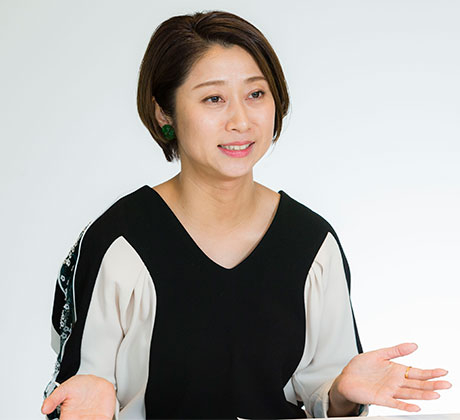
Yuko Okubo
Contemporary dancer
Ida:You also wrote a book, KATHY's New Dimension. After you published the book, I understand that you held a performance that developed through your association with an ascetic Buddhist monk. Could you tell me a little about that?
Okubo:While searching for new ways to express my art, I sought to learn from individuals who are deeply connected to the origin of Japanese arts. Here, my interest shifted from the scientific to the roots of my art because I had always looked at myself objectively in my search for balance, and I felt the answer may lie in something beyond this. You expressed this sense very well, and I was happy because I felt that it helped me to understand myself.
Ida:My impression about you is that you express your world using your body as a tool. If my impression is correct, we scientists do the same. We attempt to understand phenomenon utilizing knowledge, techniques, and tools, and express what we understand in different forms. This approach is very similar to what you are doing.
Okubo:Yes, in fact, I express the present moment through contemporary dance using my body as an instrument. Throughout my development, my involvement in dance has gradually changed. When I was little, it was simply fun to dance. As I grew, the meaning of dance evolved within me, and now I enjoy it because dance gives me a great chance to share my expression to the outside world.
Ida:I see. I also think the same way. We scientists are often asked why we conduct research. The most common reason given is our desire to know. For me, the reason is because I want to be linked to the world. When I was little, my sense of isolation was cured by visits to the public library. It was there that the books I read connected me to the world around me.
Okubo:That's an interesting look into the experience that formed you as an adult. I think this is the first time I heard you talk about your childhood.
Ida:Then, I was introduced to physics, a field I would continue to study throughout my time at college. It was the first time that I felt truly connected to the world. There are generally two types of scientists. One is the individual who likes to observe nature and conduct experiments. However, a certain percentage of scientists are not interested in doing that at all. There are a great many astronomers who have never observed the stars.
Okubo:Really?!
Ida:Yes, I believe that's true in many ways. Those people are interested in the structure and origin of universe. In basic science, we are not always concerned with clear goals because definite goals limit us, and because it's the unexpected discoveries that often lead to the biggest advances. Many scientists simply let their interests take them wherever they may lead, and most scientists continue looking for new areas to explore. Currently, the Earth-Life Science Institute (ELSI) has advanced collaborative projects with young creators in a wide range of fields. I am also participating in these projects.
Okubo:I don't often get much of a chance to work with people in different fields. It must be very exciting, although I imagine that the different perspectives from various fields create barriers.
Ida:I notice differences in the approaches taken by creators and scientists, and want to use the advantages in these differences in communication among scientists; however, it is not always easy because my background did not train me to express myself based on my bodyas. When providing scientific information, it is meaningless to simply show results. What is important is to consider how to communicate our understanding of the phenomena, and what that understanding means. In this collaboration, I have sought to address this.
Okubo:It is very useful to approach things from the different perspectives that creators have. Scientists are often thought to be inflexible, but this is not true at all.
Ida:Yes, I think this is because scientists are very careful about the language they use. Being extremely difficult to prove something completely, scientists tend to avoid stating clearly what things are. Therefore, we tend to use a range of expressions that nuance our communication; but what we say is not always communicated well.
Okubo:You mean expressions like "perhaps" and "we cannot completely rule out the possibility." (Laughter)
Ida:Conclusions in papers are expressed using terms such as "could," "would," "may," and "might." It's not that we mean to be overly vague. It's that we want to communicate our ideas carefully and accurately. That's not to say that we couldn't improve our ability to do this though.
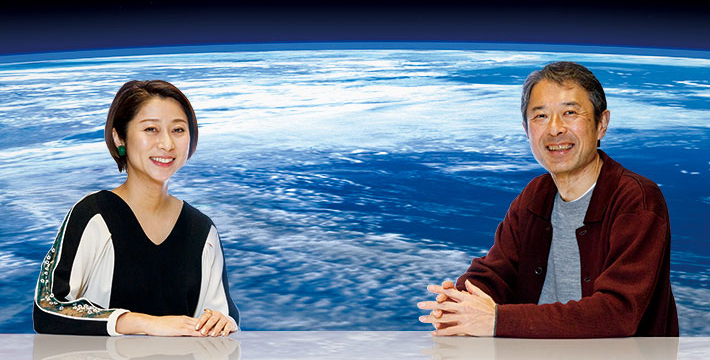
Ida:Discussions on the formation of planets have changed significantly. Before 1995, the solar system was the only one example of planetary systems we knew.
Okubo:1995! Wow, I'm surprised our knowledge is so recent.
Ida:Since 1995, thousands of exoplanets have been discovered; and along with these discoveries, the resolution of our observations and the focus of our approaches have changed significantly. We had a theory to explain the configuration of the planets in the solar system. However, the majority of the thousands of exoplanetary systems we have since discovered have configurations that are quite different from our solar system. This new knowledge was really beyond what we had expected. We could not apply our existing theory of planet formation, and had to start from scratch.
Okubo:That must have been quite a stumbling block. How did you react?
Ida:We were completely shocked at first, and then were super happy when we realized that everyone, both those with long careers in astronomy and young researchers alike, were at the threshold of an entirely new and very exciting era of discovery. We were provided observation data and already had basic tools of planet formation, although the tools were applied only for the solar system. It was great fun for me. My mind was filled with new ideas that I thought could be applied to the creation of a model capable of explaining the solar system and a wide variety of exoplanetary systems. New mysteries kept arising through discussions that allowed all sorts of possibilities.
Okubo:Were there any major technological innovations that have helped to discover new planets?
Ida:No, our thinking was confined to what we had known rather than what we were learning. The technology that first allowed us to observe extrasolar planets had already been established in the 1980s; however, astronomers failed to apply it. The problem was that they only knew about our solar system, and they were inclined to only think in terms of variations of what they knew. Jupiter orbits the sun every 12 years and Saturn takes 30 years. We were looking for planets with orbits of 10 to 20 years. However, the first planet discovered had an orbit of only four days.
Okubo:Only four days? Being so different, it must have been hard to find!
Ida:It was necessary to eliminate noise from the observational data in order to see through to the signals we were looking for. Some suspected, however, that the noise itself included signals, and it was confirmed that it did. After this, scientists reanalyzed old data and discovered many signals. Since then, equipment specifically designed to detect these signals has been developed, and observation technology has improved significantly.
Okubo:Once you find a target, then, is it generally the case that accuracy tends to increase? If so, exploring different approaches to locate stars may be fruitful.
Ida:That's exactly right. New approaches to observation have been proposed, approaches which look for such things as Doppler* changes in fixed stars, eclipses of central stars by planets, and optical distortions due to the gravitational pull of planets. Technology has also improved, such as the shift from coaxial cable to optical fiber, and the capability to maintain temperature within 0.00001 degrees. These accumulated improvements have made it possible to get highly accurate observations. Some thought it would be impossible to discover something as large as the Earth, and others thought it would take a 100 years to discover a planet. In the end, it actually took about only 10 years.
Okubo:Recent progress in scientific technology has been very quick. Information can be shared instantly through the internet. Anyone using a computer knows what I'm talking about.
Ida:As the speed of our data computations and simulations improves, the pace of our research also improves. We can now recognize the varieties of exoplanetary systems and consider the possibility of planets that harbor life.
Optical Doppler effect: Doppler effect is a shift in the frequency or length of a wave, including sound and electromagnetic waves, for an observer moving relative to the source of the wave. One example is an ambulance siren. When a siren is approaching us, its pitch sounds higher, and when it is moving away from us, its pitch sounds lower. A similar effect is observed with light. Stars moving toward us look blueish, and stars moving away from us look reddish. Color changes depending on the frequency.
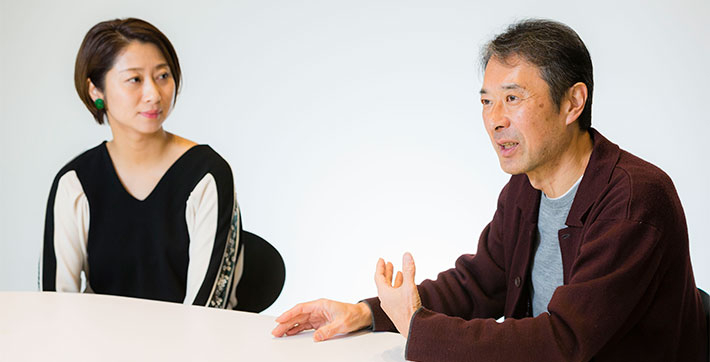
Okubo:It is fantastic to think about life on other planets!
Ida:Astronomers are now paying attention to planets that move around red dwarf stars that emit infrared radiation. We think life may exist on such planets. Oceans may exist, but the environment is completely different from that of the Earth. Planets moving around red dwarf tars are easy to observe, and they also emit strong X-rays and ultraviolet rays. In such an environment, life may evolve. Although we initially imagined environments on planets with life to be similar to Earth's, we are now seeking environments that are completely different from ours.
Okubo:How do you determine the potential for life on other planets when they are so far away?
Ida:We examine the composition of the atmosphere using telescopes. Oxygen on Earth is discharged by plants and bacteria as a waste product of photosynthesis. We are now thinking about what else we can derive from the atmospheres of other planets. The European Southern Observatory (ESO) announced about a year ago that a planet located 4.25 light-years away may be of similar size to the Earth and may have oceans. Utilizing current nanotechnology, it is possible to send a camera to the exoplanet by installing it on a 1-cm2 microchip and using a laser to accelerate it to 1/4 of the speed of light for the journey. It would take 16 years to arrive at the planet, and then another 4 years to receive the photos taken there.
Okubo:You mean, if we send the camera now, we'd get photos from the planet in 20 years? It seems that planetary science has been making great progress since 1995.
Ida:Ten years after 1995 was also an important year. In 2005, the National Aeronautics and Space Administration's (NASA) Saturn probe Cassini was sent to observe Saturn's rings. It discovered geyser out from the surface of Enceladus, one of Saturn's moons. The surface of Enceladus is covered with ice. Water jetting out from cracks showed that its internal temperature is very high. The water also contained organic substances. In other words, Enceladus has a warm underground ocean where life may exist.
Okubo:Discussions on the origin of life are so fascinating. And listening to this story at ELSI makes it is even more exciting!
Ida:The mission of ELSI is to seek the origin of the Earth and life, and the discovery of exoplanets has helped advance our knowledge. It's the same for life. The genetic codes for all life on Earth, bacteria, trees, animals and humankind, are very close. That is, we share a common ancestor. While the number of amino acids is countless, the same 20 amino acids form the building blocks of both humans and bacteria. In other words, we only know one type of life.
Okubo:I see. Knowing only one type, it is hard to consider others. I guess it's the same with our model of the solar system, isn't it?
Ida:It is. The discovery of creatures with different structures on Saturn's moons,moon Enceladus and Jupiter's moon Europa, and our observation of extrasolar planetsexoplanets help us in our search for the origin of life on Earth. The scientific progress gives us the means to demonstrate theories that will become common knowledge. This is the stage we are at now. Scientists work together to establish research institutes like ELSI, which was founded ahead of others around the world, to focus on research into the origin of life. In the field of space biologyastrobiology, an area that has shown remarkable advancements, the National Institutes of Natural Sciences Astrobiology Center was established in Mitaka City, Tokyo, a few years ago; and similar research institutes will be founded as work in this exciting field progresses. Proof and repeatabilityreproductivility are essential because, quite simply, if something can't be demonstrated, then it isn't science. When I was a college student, for example, even evolution of life was not yet considered science. As we found more and more evidence, however, we were able to demonstrate the validity of the theory.
Okubo:Right, and it's become an important academic field now. With these advances we may discover the origin of life in the near future.
Ida:Yes, I expect we will see a rapid expansion in our knowledge about the origin of life.
Okubo:Listening to you makes my earlier thoughts about dance and the world seem childishly simple. You've helped me to realize that following our interests is the most valuable thing to do.
Ida:People are enthusiastic about the things that interest them. Of course, different people are interested in widely different things, but being enthusiastic about something, no matter what it may be, is very exciting. I enjoyed talking with you today. I want students studying planetary science to become familiar with different ways of thinking.

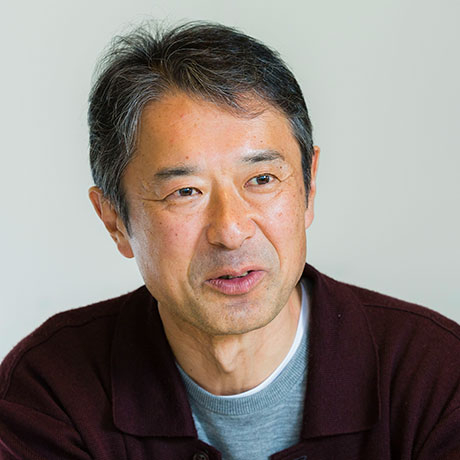
Shigeru Ida
Professor, Earth-Life Science Institute
Shigeru Ida was born in 1960. He graduated from the Division of Physics, Faculty of Science, Kyoto University in 1984. After finishing his doctoratePhD in 1989 from The University of Tokyo's Department of Earth and Planetary Science, The University of Tokyo, he became an associate professor in the Department of Earth and Planetary Sciences at Tokyo Tech in 1993. He was promoted to professor in 2006, and became Vice-Director of ELSI, which was founded in 2012 through the WPI Program of the Ministry of Education, Culture, Sports, Science and Technology. His major publications include Extraterrestrial Life, Heteromorphic Planets — Theory of Extrasolar Planet Formation, and The Solar System and Planets Beyond. He is currently teaching at the Department of Earth and Planetary Sciences.

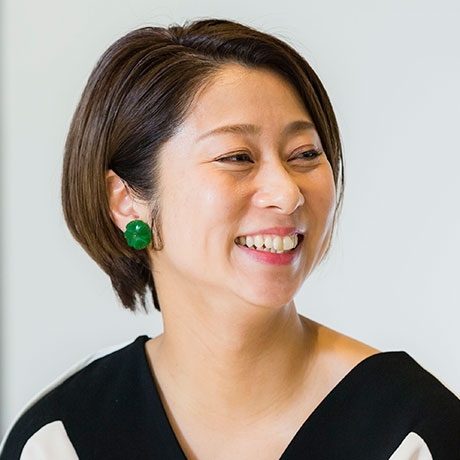
Yuko Okubo
Contemporary dancer
Yuko Okubo graduated from Tachibana Ballet School. After leaving the Asami Maki Ballet, she embarked on a career in contemporary dance, performing both at home and abroad. In 2002, she founded the performance group, KATHY, and took charge of production and planning. She was invited as a special guest to LISTE (Art Basel) in 2007. She published a book on dance theory entitled KATHY's New Dimension. She has produced and choreographed fashion shows and many other events as well as exhibits of her work through a wide range of approaches. Recently, she has been engaged in productions of new entertainment. One of these was "Three Worlds," a history linking dance in traditional entertainment and festivals to the present.
Earth-Life Science Institute (ELSI)
ELSI is a research center in the World Premier International.
Research Center Initiative (WPI). Attempting to solve the mystery of the origin and evolution of life, ELSI researchers are creating a new field — bioplanetology.
The Special Topics component of the Tokyo Tech Website shines a spotlight on recent developments in research and education, achievements of its community members, and special events and news from the Institute.
Past features can be viewed in the Special Topics Gallery.
Published: March 2017